

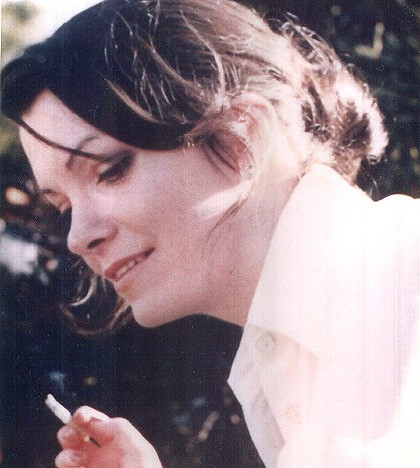
Thanks to Anthony Barnao's book "Violent Crimes that Shocked a Nation" for the first photograph and information about Mary

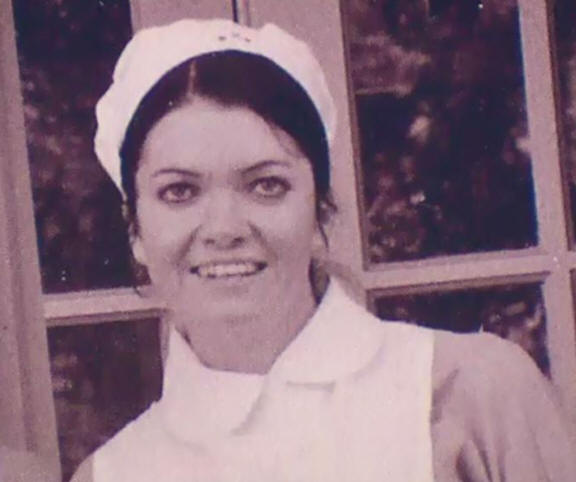
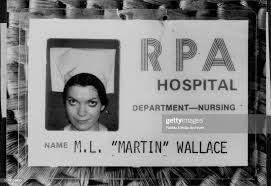
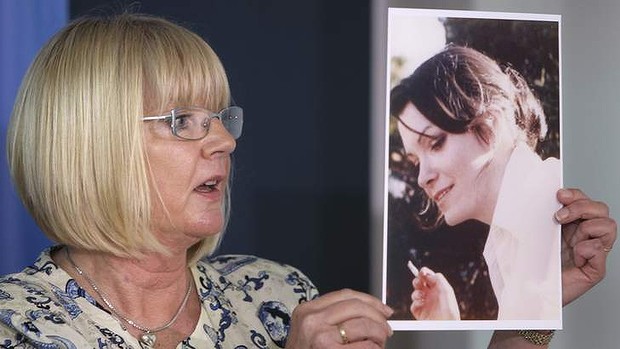
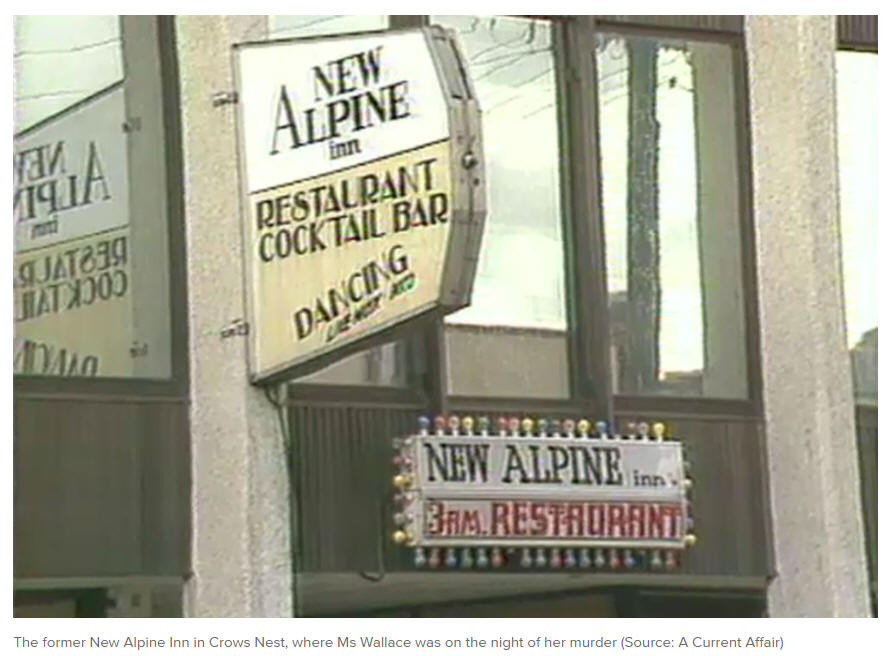
Mary was 33 years old when she disappeared in late September 1983. She has dark hair and grey eyes.
She had been due to attend her sister's birthday party but did not arrive. Mary was a nursing sister at Hunters Hill private nursing hospital in Sydney. She lived in Drummoyne and was due at her parents' home in Lane Cove for the party.
The previous evening Mary had been out with friends at the Alpine Inn wine bar in Crow's Nest. She was wearing a dark woollen top and a light green denim skirt. The group had previously been at the Stoned Crow bar and before that at the Malaya Restaurant until 1am. During their time at the Alpine Inn a man was paying particular attention to Mary - approximately 30 years old, tall, neatly dressed, blonde, neat moustache, clean cut appearance. Mary was seen at 3am talking to this man. She had been feeling unwell and was sick in the toilets of the wine bar. Mary's friends attempted to look after her but the well dressed man told her friend he was a Police officer and offered to escort Mary home. The man helped Mary into his brown 1982 Holden Commodore, fitted with fibreglass bullbars parked on Willoughby Road outside the Alpine Inn. The man drove off with Mary, headed West and this was the last time Mary was ever seen.
Police did find the blonde man who said he drove Mary a few streets away, they had sex and he then fell asleep in his car, awaking at 5am to find Mary gone. He denied murdering Mary. He admitted he had lied about being a Police officer. This man was seen earlier scrubbing his car meticulously clean after Mary disappeared.
An anonymous letter was sent to Police 2 weeks after Mary disappeared claiming her body was buried under a rock in bushland in St Ives Chase. Police searched the area but found nothing.
Despite a massive Police search of nearby bushland including Lane Cove National Park, no trace of Mary Wallace has ever been found.
22 Jan 10 @ 07:39am by Janne Seletto - Mosman Daily
Acting Police Minister David Campbell said Ms Sandford, a New Zealander, disappeared in January, 1980, and was presumed murdered.
“Marion Sandford was last seen by her brother Peter Sandford around January 24, 1980, at their home in Cammeray,” Mr Campbell said.
“Just three days later, Peter received a letter claiming to be from Marion, letting him know she was all right and that she’d be away until later that week.
That was the last contact anyone has had with Marion, that we know of.”
Detective Sergeant Robert George, of Harbourside Local Area Command, said that, at the time of her disappearance, Ms Sandford was known to police.
“In 2002, Marion’s disappearance was investigated in connection with the disappearance of two other women - Linda Davie, who was last seen in St Leonards in April, 1980, and Mary Wallace, last seen in Crows Nest in September, 1983,” he said.
“One other line of inquiry has been the potential involvement in the supply of drugs in the area.
“We are reviewing any links Marion may have had with a heroin importation syndicate.”
Detective Sergeant George said NSW Police had worked with the NZ Consulate and NZ Police.
“While we’ve had a number of leads, every one so far has unfortunately gone cold,” he said.
Mr Campbell said police wanted to hear from anyone who knew Ms Sandford, whether they were friends, relatives or associates.
“The Sandford family deserves closure and the community expects justice,” Mr Campbell said.
“I urge anyone with any information - no matter how small or insignificant you may think (it) is - to come forward to their local police station or call Crime Stoppers anonymously on 1800 333 000.”
Mary Louise Wallace, then aged 33 years, disappeared in the early hours of
September 24, 1983.
She was last seen getting into a car with man she had befriended while drinking
with friends at a hotel on Willoughby Rd at Crows Nest.
As part of the current Unsolved Homicide Review Team investigation into her
disappearance, police have an hired expert geophysicist who will use ground
penetrating radar to examine an area of interest at Jenkins Hill, within the
National Park.
This area will then be excavated with a bobcat.
Police began excavating the site at 9.30am today but the examination and
excavation of the site is expected to take up to two days.
It was once NSW's most high-profile missing person case involving a bogus cop, a missing nurse, a mysterious letter and a heartbroken family.
The year was 1983 and Sydney was gripped with the disappearance of nurse Mary Louise Wallace.
Police believed then they knew who had killed the 33-year-old from Drummoyne. They thought he was a local who worked as a garbage truck driver and was also known to pose as a police officer.
But despite the NSW police force's biggest ever homicide investigation involving hundreds of interviews, Ms Wallace remains a missing person and no charges have ever been laid.
The case started in the early hours of September 24 after a night during which Ms Wallace fell ill at Alpine Inn, a disco, on Willoughby Road, Crows Nest, on Sydney's lower north shore.
After a night involving dinner, drinks and dancing, Ms Wallace was sitting in the Inn's toilets and wanted to go home.
Her friends were startled to see a blond man in his 30s enter the room.
He told them he was there to help and to move aside, as he was a police officer.
After kicking in the cubicle door, which reportedly struck Ms Wallace in the face, the man said he would take her home.
It was 4am and her friends said they had no reason to doubt the man, who was seen talking to Ms Wallace earlier that night.
But what happened next is unclear.
Ms Wallace never made it back to her Drummoyne apartment and did not attend a family function the next day.
According to several media reports from 1983, the man, who later admitted lying about being a police officer, said he and Ms Wallace had sex in his brown Holden Commodore in a nearby street.
He claims he then fell asleep and, when he awoke, Ms Wallace was gone.
But police believe she may have been raped, murdered and dumped in bushland near Lane Cove.
In a Daily Mirror story in 1985, based on a secret police document, it was alleged police believed they knew who the killer was and what he did with Ms Wallace.
The story also alleged that forensic officers might have not properly tested key pieces of evidence found in the back of the suspect's car.
But despite lengthy interviews with police, the man has never been charged.
To add to the mystery, police received a letter not long after Ms Wallace's disappearance telling them she was buried under a large rock in Lane Cove National Park.
A search of the site and much of the National Park never uncovered any trace of her.
While police later said they thought the letter was a hoax, the park is today the centre of a new search for Ms Wallace's body.
Homicide police reviewing the case have hired an expert geophysicist, who will use ground-penetrating radar, a non-intrusive geophysical survey method, to examine an area of interest at Jenkins Hill.
The area will then be excavated with a bobcat.
Police will be on site from 9.30am today but the examination and excavation are expected to take up to two days.
Acting Homicide Squad Commander, acting Superintendent John Lehmann, said police would search an area of the national park that was built over in the days following Ms Wallace's disappearance.
"We expect to be on site for up to two days as we excavate the footings of what was once a public observation deck," Superintendent Lehmann said.
"Those deck footings were laid in the days after Mary's disappearance.
"Detectives at the time did conduct an examination of the area. However, today's dig is the result of a more recent re-investigation of the case."
Superintendent Lehmann said detectives recently travelled to Western Australia and New Zealand to reinterview several witnesses before a coroner's inquest later this year.
Pauline Biddle, a friend of Ms Wallace, today launched a public appeal for information "no matter how small" on behalf of the Wallace family.
"Mary was an immensely popular and vivacious woman who was very much loved by her family and friends and admired by her colleagues," Ms Biddle said.
"She was especially close to her two older sisters and not knowing what happened to Mary has been absolutely devastating for them.
"I think after all this time we would all be more at peace if we finally had some answers so we could lay Mary to rest."
Ms Wallace's family, in 1983, said she "did not have an enemy in the world".
Now, all they want are answers as to what happened on that tragic September night.
AN examination of concrete foundations of an old observation deck in Lane Cove National Park may today reveal the fate of a Sydney nurse who disappeared 27 years ago.
Mary Wallace, 33, went missing after an evening at a nightclub in Willoughby Road in Crows Nest, which she left with a man claiming to be a police officer.
The blond man, who later admitted lying about his job, told police he had sex with Ms Wallace in his car in a nearby street even though she had been sick and had wanted to go home. He said he fell asleep afterwards and when he woke up, Ms Wallace was gone.
The man, who was then in his 30s, remained a suspect in the case but he was not the only one, the Acting Commander of the Homicide Squad, Acting Superintendent John Lehmann, said yesterday.
''We are not discounting that person completely. We are not discounting the fact that other persons are responsible.''
Police would use ground penetrating radar today which worked like an X-ray to examine the foundations, laid in the days after Ms Wallace's disappearance, and determine whether any bones were contained in or under them.
He said the police unsolved homicide team had been reinvestigating Ms Wallace's disappearance since 2008 and had interviewed new witnesses in Western Australia and New Zealand who shed more light on the disappearance.
''They have given us important information that enabled us to take it further,'' he said.
Police had not previously spoken to these witnesses and it was expected they would give evidence at an inquest into Ms Wallace's disappearance next month.
Ms Wallace's disappearance in September 1983 was once the most high-profile missing person case in the state.
Police had previously searched the site after receiving an anonymous letter saying Ms Wallace was buried under a large rock in the park.
It is the first time this technology has been used in the search for her remains.
Pauline Biddle, a friend of Ms Wallace, yesterday appealed for information ''no matter how small'' to solve the case.
As one of NSW's most high-profile cold cases turns high-tech, detectives hope to finally have some answers for a devastated family who've been waiting 27 years for a breakthrough.
Ground penetrating radar is being used by police investigating the disappearance of Sydney nurse Mary Louise Wallace.
Ms Wallace was 33 when she disappeared in the early hours of September 24, 1983, after meeting with friends at a hotel on Willoughby Road, Crows Nest, on Sydney's north shore.
She was last seen getting into a car with a man she had met at the venue on the night.
Homicide police reviewing the unsolved case have hired an expert geophysicist.
They started work on Tuesday using ground penetrating radar (GPR), a non-intrusive geophysical survey method, to examine an area of interest at Jenkins Hill at Lane Cove National Park.
Police will then excavate the footings of what was once an observation deck within the park.
"We expect to be on site for up to two days," said Acting Homicide Squad Commander Superintendent John Lehmann.
"Those deck footings were laid in the days after Mary's disappearance.
"Detectives at the time did conduct an examination of the area, however today's dig is the result of a more recent re-investigation of the case."
Police reportedly received a letter not long after Ms Wallace's disappearance telling them she was buried under a large rock in Lane Cove National Park.
As part of the re-investigation, detectives have travelled to Western Australia and New Zealand to reinterview several witnesses ahead of a coronial inquest later this year.
Mary's friend Pauline Biddle described her as an "immensely popular and vivacious woman".
"(She) was very much loved by her family and friends and admired by her colleagues," she said on Tuesday in a statement.
"She was especially close to her two older sisters and not knowing what happened to Mary has been absolutely devastating for them.
"I think after all this time we would all be more at peace if we finally had some answers so we could lay Mary to rest."
Ms Biddle appealed for anyone with information "no matter how small" to come forward.
"Even after all this time it may just be the smallest recollection that will lead police to finally solving the mystery of Mary's disappearance," she said.
Updated
An inquest has opened into the disappearance of a Sydney nurse who was last seen getting into a car 27 years ago.
Deputy State Coroner Paul MacMahon is investigating the disappearance of Mary Louise Wallace, who was last seen on September 24, 1983.
Police say the 33-year-old was seen getting into a car belonging to Robert Adams, after meeting him at the Alpine Inn Hotel at Crows Nest in Sydney's north.
The inquest has heard how Mr Adams drove the car to a nearby street to have sex with the nurse only to wake up hours later to find her gone.
Days later he was seen washing his car seat covers and vacuuming the interior of his car boot.
Detectives have travelled to Western Australia and New Zealand to reinterview witnesses ahead of the inquest.
As part of an unsolved homicide investigation, an expert geophysicist was hired earlier this year to examine an area in the Lane Cove National Park.
The inquest continues.
Updated
An inquest into the disappearance of a Sydney nurse has heard the last man to see her has a violent history.
Mary Louise Wallace was last seen on September 24, 1983.
Police say the 33-year-old was seen getting into a car belonging to Robert Adams after meeting him at the Alpine Inn Hotel at Crows Nest in Sydney's north.
The inquest before Deputy State Coroner Paul MacMahon has heard how Mr Adams drove the car to a nearby street to have sex with the nurse only to wake up hours later to find her gone.
Days later he was seen washing his carseat covers and vacuuming the interior of the car's boot.
The inquest heard Mr Adams has a violent history, including rape and assault, and once whipped his wife with a dog chain.
Forensic evidence has been unable to link Mr Adams to the nurse's disappearance.
Detectives have travelled to Western Australia and New Zealand to reinterview witnesses ahead of the inquest.
As part of an unsolved homicide investigation, an expert geophysicist was hired earlier this year to examine an area in the Lane Cove National Park.
The inquest continues.
THE man police have told the state coroner they believe raped and killed missing nurse Mary Wallace allegedly joked about his suspected involvement, asking a woman he had just met: "I don't look like I've got a murderous face, do I?"
Robert Adams then put his hand around her waist and started to rub her up and down, Susan Holman yesterday told the inquest into Ms Wallace's disappearance. When she reported his behaviour to police, they warned her to be "very, very careful of this person", the inquest at Glebe Coroner's Court was told.
Ms Holman, 47, was the manager of the kiosk at what is now Lane Cove National Park where Adams, 58, was working as a carpenter at the time he gave Ms Wallace a lift home from a Crows Nest wine bar in September 1983.
She was never seen again.
Police have searched the national park but the inquest has been told that there are rugged areas where a "body would be hard to find".
Adams -who the inquest heard was a convicted rapist with a history of violence towards women - has denied having anything to do with Ms Wallace's disappearance, claiming he fell asleep after they had sex in his car and, when he woke, she was gone.
Ms Holman had only been working at the kiosk for two days when Adams turned up in October 1983.
She said she knew about the missing nurse from news reports but did not know police had a suspect.
She said Mr Adams had asked her: "You know the nurse that went missing from Crows Nest? "I'm on suspicion for murdering her."
She claimed that he also said to her: "You had better watch out, I might hit you over the head and rape you."
The inquest continues before deputy state coroner Paul MacMahon.
They have paraded through the Glebe Coroner's Court witness box all week, respectable middle-aged men and women, sadder and a little jaded, not the bright young adults of the early 1980s, enjoying their leisure hours on Sydney's lower north shore, drinking and partying.
A great pall had fallen over their lives on September 24, 1983, when nurse Mary Louise Wallace, intoxicated, leaving the Alpine Inn in Crows Nest at about 3.15am, accepted a lift from Robert John Adams and was never seen again. Soon after, Adams, now 58, became a suspect in her disappearance.
The court heard that Adams, born in Christchurch, New Zealand, in 1952, had migrated to Australia in December 1970 after enduring a disturbed childhood and with a juvenile criminal record. Outgoing, well-built and good looking, he had little trouble attracting female attention, marrying 21-year-old Judith Herrod in 1971. The couple had a baby in March the following year, adopted the child out and settled briefly in Queensland.
Adams, who could neither read nor write, worked as a railway labourer, carpenter and furniture maker. But he started to drink heavily and became violent. So violent that Herrod, who gave evidence this week that he twice tried to throttle her, left him for good in 1974.
Earlier on the night of September 24, Adams had purported to be a policeman, and Wallace might well have accepted this and thought he would get her safely home. He did not. The trip was apparently short.
Adams was drunk and in no fit state to drive. He said he had sex with Wallace in the car and then went to sleep. He did not know what happened to her after that. Wallace, then 33, a bright, fun-loving woman, close to family and friends, a highly regarded nurse at the Hunters Hill Private Hospital, was never heard of again.
By now, Adams had an adult criminal record, including using unseemly words, assaulting police, possessing Indian hemp, assault, malicious injury, negligent driving and possessing goods in custody.
In September 1976 he had been sentenced to six years jail for rape, with 12 months non-parole. He was released in 1978, only to sexually assault another woman and have his parole revoked. Both victims said he had throttled them to the point where they were afraid for their lives.
Released again in 1980, Adams finished his parole period on June 24, 1983, exactly three months before Wallace disappeared. A policeman at the time said he had advised a young woman at the Alpine Inn not to go out with Adams because he was ''bad news''.
Adams quickly justified the suspicion. He raped one woman after enticing her into his home, and the court heard this week she was so terrified that she fled town rather than give evidence at his Supreme Court trial. Another woman, whom he pushed into his car aiming to rape her, did give evidence and Adams was convicted.
Suzanne Beckingham (now Newhouse), who shared his flat, said the day after Wallace's disappearance, Adams had washed clothes - unusual because he normally washed clothes on weekdays. He had then thoroughly cleaned his car, shifting everything out, using the hose and a vacuum cleaner.
Some days later, on her account, police turned up and wanted to look at their flat. Adams rang and said: ''Why did you let them into the flat? They have no right.'' He was so aggressive she moved out.
Adams, whose name and picture were being circulated by police, demonstrated bravado. He harassed a kiosk manager, 20, at the Lane Cove River National Park, where he was working as a carpenter, his behaviour so alarming her that she left her job.
Meanwhile, police had found that Wallace had a number of boyfriends, two of whom gave evidence this week, and she also belonged to a telephone dating service. There was also evidence that earlier in the night of September 23-24, 1983, when she was moving from nightspot to nightspot with work colleagues, she had been at the Stoned Crow, a Crows Nest wine bar.
She had been crying and said a man, whom she did not name or describe, had struck her in the face because she would not go out with him. Friends could see no marks on her face, the coroner's court heard.
Police searched widely, including through the Lane Cove National Park and a viewing platform where Adams had been working. Eventually they dug up the 26 concrete piers there to see whether there was any trace of Wallace.
Then in October 1983, the detective leading the inquiry, Jim Counsel, received an extraordinary note, written in childish script, naming Adams and Wallace, by their initials, giving part of the registration number of Adams's car, and saying he had killed her and indicating where the body could be found, in North Turramurra.
The author ended the note with a plea: ''Help me please.'' A police search of the area proved fruitless, and the mystery remains as to who sent the note. Could it have been sent by Adams himself? Could he write just a little? Or could it have been sent by a stalker, someone shadowing Wallace that night?
The police investigation was revived by the unsolved homicide team of the homicide squad in 2008.
Adams, who is representing himself at the inquest, has denied involvement in Wallace's disappearance.
No physical evidence could conclusively link Adams with Wallace's presumed murder. Police did find blood on some overalls from his car and on vice-grips found in the boot. But forensic techniques at the time could only establish that the blood could have come from Adams or Wallace. Adams, for his own part, married again in 1989 and no evidence has been presented that he has been in trouble since 1983.
Yesterday Adams's present wife, Linda, whom he met in October 1983, about two weeks after the disappearance of Wallace, gave evidence of a long and stable marriage to him.
Linda Adams, who had been working as receptionist at the Royal North Shore Hospital, said that she had accepted him even though at the time there was publicity over the disappearance of Wallace and some of the publicity indicated that he was a suspect. The couple have four sons.
Philip Strickland, the counsel assisting the inquest, asked yesterday: ''When you had discovered he had been in jail for rape, had a criminal history and was a suspect in the disappearance of a girl, surely you are not saying it did not concern you at the time?''
The wife replied: ''No doubt it would have but I am still here, so?''
In 2008 the unsolved homicide team resumed an active inquiry. Senior Constable Nicole Jones said in her opinion, based on the circumstantial evidence, Adams had a window of opportunity and that he murdered Wallace and disposed of the body. But in 27 years, there has been no attempt to mount a prosecution.
Updated
The New South Wales coroner has terminated an inquest into the disappearance and presumed death of a Sydney nurse.
Mary Louise Wallace disappeared in the early hours of September 24, 1983.
Police say the nurse, then aged 33, was last seen at the Alpine Inn Hotel at Crows Nest in Sydney's north.
They say she was seen getting into a car with Robert John Adams who she had met there.
He told police he had driven with her only a short distance, had sex with her and had fallen asleep.
In terminating the inquest, Deputy State Coroner Paul MacMahon said the evidence is capable of satisfying a jury beyond reasonable doubt that a known person committed an indictable offence relating to the death.
The matter has been referred to the Director of Public Prosecutions.